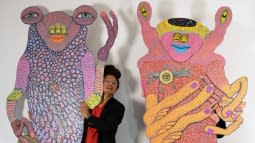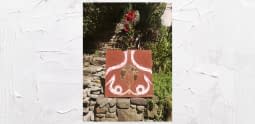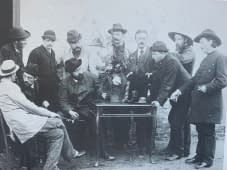Art and Culture in the Media #9
ONCE THOUSANDS OF YEARS AGO... when there was no Christmas, the winter solstice with the worship of the sun and its deities was of great importance until the spread of Christianity. With Neolithic and Roman cult objects and grave goods of the first Christians, the prehistory of Christmas is illuminated in the Historisches und Völkerkundemuseum St. Gallen (until 29.1.23). A magnificently decorated tree brings Christmas cheer.
Nativity ART BY WOMEN: The traditional Christmas exhibition at the Landesmuseum Zurich focuses on female nativity crafts. Figures and nativity scenes made of wax, clay or wood are richly detailed and lovingly decorated. The exhibition for the whole family is complemented by historical Advent calendars and two unique nativity scenes carved by wood sculptors Camilla Braunger and Márcia Bieri (duration until Jan. 8, 2023).
STARS, ANGELS, COSMOS: The Museum Kloster Muri shows heavenly things in many facets (until 8.1.2023) from the world of angels to the cosmos with celestial bodies and stars, which inspire literature and art until today. The fascinating Christmas exhibition ranges from archaeology, traditions of straw and straw star weaving in Freiamt to the story about the world-famous "Little Prince" by Antoine de Saint-Exupery.
GOD JUL - HAPPY CHRISTMAS with a difference at the Swiss Children's Museum in Baden with guest country Norway. When everything is covered in a white blanket of snow, Advent stars and candle lights shine in the windows, concerts are played and dwarves of various shapes and forms populate the homes, then all of Norway celebrates Christmas with various customs and traditions - to be experienced up close until 8.1.2023.
GOLD, GOLD, GOLD... both the material and the color, which have always symbolized luxury, wealth, value and opulent splendor, were lost in the art of the 15th century. And did not reappear until the 1950s in many different styles and genres. Anne Schloen's publication - the first book to trace the properties and meanings of gold in the 20th century - fits magnificently into the last weeks of the year.








